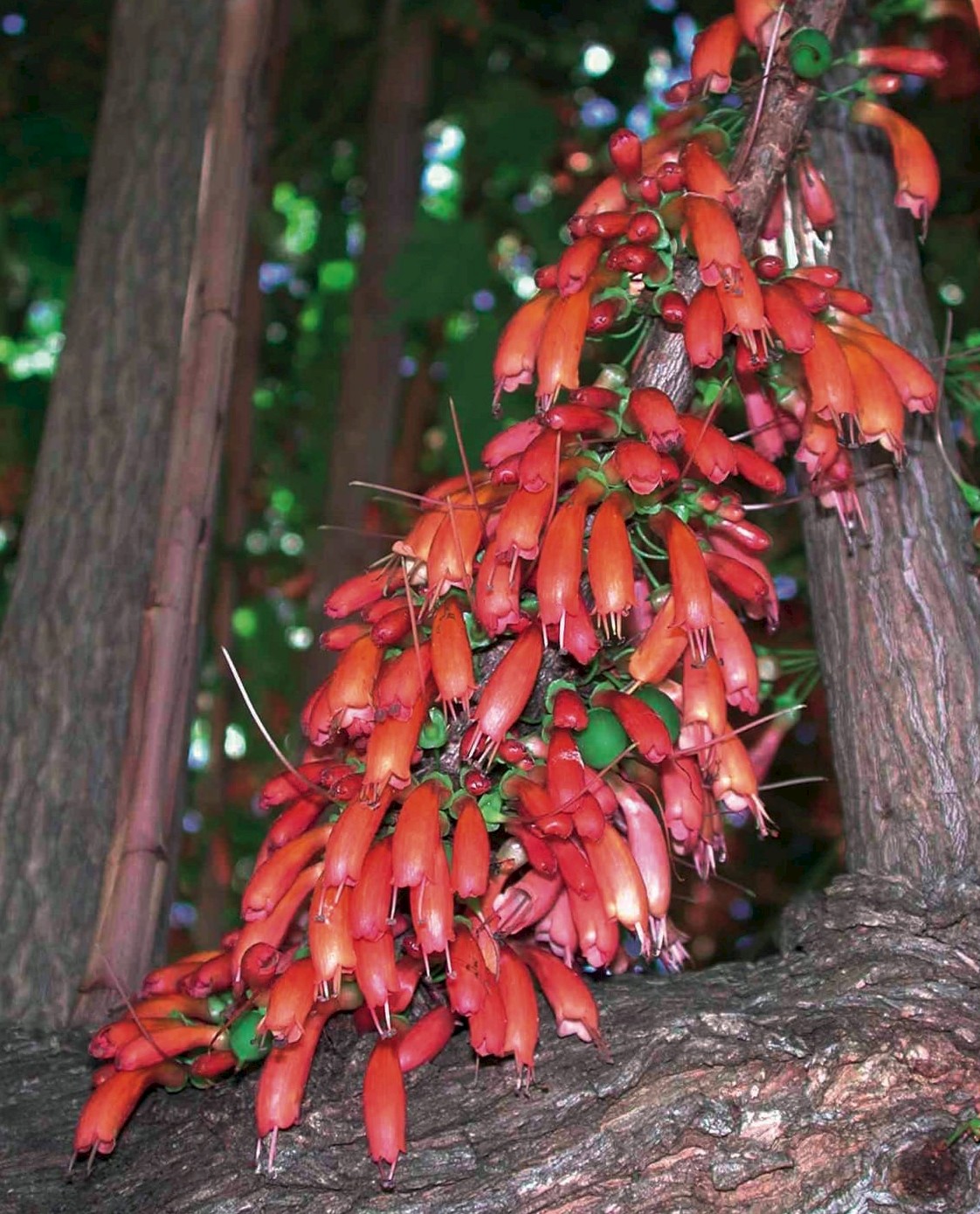Halleria lucida
Credits
Article from New Trees by John Grimshaw & Ross Bayton
Recommended citation
'Halleria lucida' from the website Trees and Shrubs Online (treesandshrubsonline.
Genus
Common Names
- African Honeysuckle
- Tree Fuchsia
Other taxa in genus
Straggly shrub 2–3 m tall or small tree to 12 m. Bark pale grey, longitudinally fissured, rather rough. Branchlets subquadrangular. Leaves thinly leathery, 4.5–10 × 2–6.2 cm, broadly ovate, glabrous, but with minute glands below, margins serrate, apex caudate to acuminate; petiole 0.4–1.2 cm long. Inflorescences usually on old wood, often partially concealed by the leaves; pedicels 1–1.4 cm long. Flowers hermaphrodite, 2.5–4 cm long, brick-red to orange-yellow; calyx three- to five-lobed, corolla unequally four- to five-lobed, tube curved, widening to 0.6–1 cm diameter, stamens four, attached to the corolla tube. Berry ovoid to subglobose, 1.2–1.8 cm long, blackish purple, often crowned by a long, thread-like, persistent style. Flowering May to December, fruiting August onwards (South Africa). Coates Palgrave 1990, Philcox 1990. Distribution ANGOLA; BOTSWANA; ETHIOPIA; KENYA; LESOTHO; MALAWI; MOZAMBIQUE; SAUDI ARABIA; SOUTH AFRICA; SWAZILAND; TANZANIA; YEMEN; ZAMBIA; ZIMBABWE. Habitat Extremely varied, including coastal scrub, karoo scrub, evergreen forest, forest margins and rocky slopes. USDA Hardiness Zone 9–10. Conservation status Not evaluated. Illustration Coates Palgrave 1990; NT386.
In some places, such as the slopes of Table Mountain above the Kirstenbosch National Botanical Garden, Cape Town, Halleria lucida forms a true tree, with multiple straight trunks supporting the canopy, but elsewhere (perhaps without the protection from fire afforded by localities such as this) it is apt to be a much smaller shrub. Its interest lies in the abundant tubular red flowers, which are an important food source for sunbirds; its attractiveness to birds in general is one recommendation for its cultivation in southern African gardens (Coates Palgrave 1990). It has been cultivated in the San Francisco area since at least 1970, when it was added to the collection at Berkeley, and should be well suited to that climate. The best specimen known in western Europe is an old, semi-collapsed tree at Tresco (6 m tall, 40 cm diameter at 60 cm) (Johnson 2007). It is also grown in mainland Cornwall, but the Tregrehan specimen remains shrubby. A warm sunny site with good drainage is required. It can be propagated by seed or from cuttings rooted in high humidity in late summer (Huxley et al. 1992).

